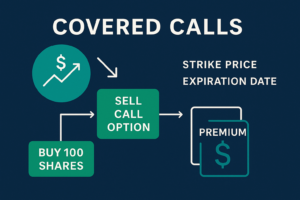Introduction
In today’s digital era, pharmacies rely heavily on electronic systems to manage patient prescriptions, medical histories, and personal data. While these systems bring efficiency and convenience, they also introduce cybersecurity risks that threaten sensitive patient information.
Data breaches can result in identity theft, financial loss, and reputational damage, shaking the trust patients place in healthcare providers. This article explores the importance of cybersecurity in pharmacies, common cyber threats, and strategies to safeguard sensitive data.
The Importance of Cybersecurity in Pharmacies
The Rise of Digital Records in Healthcare
Pharmacies are now deeply integrated into digital healthcare systems:
- Electronic Health Records (EHRs): Patient prescriptions, medical records, and billing details are stored digitally.
- Online Services: Secure platforms support services like online prescription refills and patient portals.
- Interconnected Networks: Pharmacies often integrate with hospitals, clinics, and insurers, increasing complexity and vulnerability.
Consequences of Data Breaches
Cybersecurity failures can result in serious consequences:
- Patient Harm: Leaked medical data can lead to identity theft and fraud.
- Financial Losses: Pharmacies face fines, legal fees, and compensation payouts.
- Reputation Damage: Trust is vital in healthcare—breaches erode patient confidence.
Stat: According to the HIPAA Journal, healthcare breaches cost an average of $9.23 million per incident.
Common Cyber Threats in Pharmacies
Top Cyber Threats
- Phishing Attacks: Fraudulent emails or links trick employees into disclosing sensitive information or installing malware.
- Ransomware: Malicious software encrypts data, with attackers demanding payment for its release.
- Hacking Attempts: Unauthorized access to steal or manipulate sensitive data.
Pharmacy-Specific Risks
- Prescription Fraud: Hackers alter or forge prescriptions through compromised systems.
- Medication Errors: Tampering with records can result in incorrect drug dispensing.
- Supply Chain Disruptions: Attacks on inventory systems can delay medication availability.
Implementing Security Measures to Protect Patient Data
Best Practices for Cybersecurity
Pharmacies can adopt these critical measures to secure systems:
- Strong Password Policies: Require complex passwords and periodic changes.
- Multi-Factor Authentication (MFA): Add an extra layer of security for access.
- Regular Updates and Patches: Keep software and systems up-to-date to fix vulnerabilities.
- Data Encryption: Encrypt sensitive information both in transit and at rest to prevent unauthorized access.
Employee Training and Awareness
Employees are the first line of defense against cyber threats:
- Cybersecurity Training Programs: Educate staff on recognizing phishing attempts and other risks.
- Simulated Phishing Exercises: Regularly test employee responses to fake cyber attacks.
- Clear Policies and Guidelines: Provide step-by-step instructions for handling sensitive data.
Regulatory Compliance: Meeting HIPAA and Legal Standards
Key Regulations for Pharmacies
- HIPAA (Health Insurance Portability and Accountability Act): Sets national standards for patient data protection.
- HITECH Act: Encourages the adoption of EHRs and strengthens HIPAA enforcement.
- State-Specific Regulations: Additional state-level laws may apply, requiring careful compliance.
Penalties for Non-Compliance
Failing to comply with regulations can result in:
- Fines: Ranging from $100 to $50,000 per violation, with annual maximums up to $1.5 million.
- Legal Action: Civil lawsuits from affected individuals.
- Criminal Charges: In cases of willful neglect or malicious breaches.
The Future of Cybersecurity in Pharmacy
Emerging Technologies for Data Protection
- Artificial Intelligence (AI): AI systems can detect anomalies and flag suspicious activities in real-time.
- Blockchain Technology: Provides secure, tamper-proof transaction records for patient data.
- Cloud Security Solutions: Advanced cloud platforms offer built-in security features to protect sensitive information.
The Role of AI in Cybersecurity
AI enhances cybersecurity efforts through:
- Threat Detection: AI algorithms analyze patterns to identify potential risks.
- Automated Responses: AI systems respond immediately to contain threats.
- Continuous Learning: AI adapts to evolving cyber threats and improves over time.
Conclusion
Cybersecurity is essential for protecting patient data in today’s digital pharmacy landscape. By understanding common cyber threats, implementing best practices like MFA and data encryption, and staying compliant with HIPAA regulations, pharmacies can mitigate risks and build patient trust.
Embracing emerging technologies like AI and blockchain will further strengthen defenses. A proactive approach that combines technology and employee awareness is critical to safeguarding sensitive healthcare information in an ever-evolving digital world.
FAQs: Cybersecurity in Pharmacies
1. What are the most common cyber threats in pharmacies?
Pharmacies face threats like phishing, ransomware, and hacking, which target patient data and disrupt operations.
2. How can pharmacies protect patient data?
By implementing strong security measures such as:
- Multi-factor authentication (MFA)
- Regular software updates
- Employee cybersecurity training
- Data encryption
3. What happens if a pharmacy experiences a data breach?
A breach can lead to fines, legal penalties, and reputational damage. Pharmacies must also notify affected patients as per HIPAA guidelines. Attorney General of Nebraska, Mike Hilgers, is suing Change Healthcare for their massive data breach that occurred in February of 2024.
4. How does AI improve cybersecurity in pharmacies?
AI helps detect threats in real-time, automates responses, and continuously learns to counter evolving cyber attacks. There are so many innovative companies in this space, like SentinelOne, Rubrik and Crowdstrike. Different layers of vulnerability are addressed by different companies.
Further Reading








